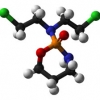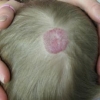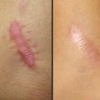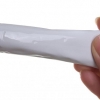Valutazione del tasso di remissione completa a lungo termine per i pazienti con pemfigo trattati con diversi regimi terapeutici, tra cui i corticosteroidi a medio e ad alto dosaggio
 Finora, soltanto pochi studi hanno valutato i trattamenti del pemfigo in accordo con le linee guida del consensus statement. Pertanto, rimangono ancora sconosciuti i fattori prognostici della remissione completa ottenuta con la terapia (CroffT).
Finora, soltanto pochi studi hanno valutato i trattamenti del pemfigo in accordo con le linee guida del consensus statement. Pertanto, rimangono ancora sconosciuti i fattori prognostici della remissione completa ottenuta con la terapia (CroffT).
Obiettivo
In questo articolo abbiamo cercato di valutare il tasso di CRoffT nei pazienti con pemfigo trattati con diversi regimi terapeutici.
Metodi
Complessivamente sono stati inclusi in questo studio retrospettivo e multicentrico 134 pazienti con pemfigo. L'end point primario è stato il tasso di CRoffT, mentre i fattori prognostici sono stati determinati utilizzando l'analisi univariata e multivariata.
Risultati
Sono stati inclusi ottanta pazienti con pemfigo volgare, 47 con pemfigo foliaceo e 7 con pemfigo paraneoplastico; l'età media era di 60 ± 18 anni. I pazienti sono stati trattati sia con dosi medie (≤0.5 mg/kg/d) (n = 32) che alte (≥1 mg/kg/d) (n = 59) di prednisone, o senza utilizzare corticosteroidi sistemici (n = 43). Il follow-up medio è stato di 77 ± 64 mesi. In tutto, 68 pazienti (50.7%) hanno raggiunto la CRoffT (intervallo di confidenza al 95%: 42.3% — 59.2%) dopo un trattamento della durata media di 36 ± 39 mesi, tra cui 47 pazienti degli 80 con pemfigo volgare (58.7%) e 21 su 47 con pemfigo foliaceo (44.7%).
I principali fattori prognostici per la CRoffT sono stati il coinvolgimento iniziale delle mucose (hazard ratio di 2.2; intervallo di confidenza al 95%: 1.05-4.58; P = .036) e la minore età (<61 anni) (hazard ratio di 2.5; intervallo di confidenza al 95%: 1.18-5.12; P = .0167). Il tasso di CRoffT di lunga durata è stato del 44% con un follow-up medio, dopo la sospensione del trattamento, di 59 ± 50 mesi.
Storia della pubblicazione:
Titolo: Assessment of the rate of long-term complete remission off therapy in patients with pemphigus treated with different regimens including medium- and high-dose corticosteroids
Rivista: Journal of the American Academy of Dermatology. Volume 69, Issue 4 , Pages 583-588, October 2013
Autori: Naif Almugairen, Valerie Hospital, Christophe Bedane, Sophie Duvert- Lehembre, Damien Picard, Anne- Fleur Tronquoy, Estelle Houivet, Michel D'incan, Pascal Joly
Affiliazioni:Department of Dermatology, INSERM U , Institute for Research and Innovation in Biomedicine, Rouen University Hospital, University of Rouen, Rouen, France
Abstract:
Background
Few studies have evaluated pemphigus treatments according to the definitions of the consensus statement. Prognostic factors for complete remission off therapy (CRoffT) remain unknown.
Objective
We sought to assess the rate of CRoffT in patients with pemphigus treated with different regimens.
Methods
In all, 134 patients with pemphigus were included in a retrospective, multicenter study. Primary end point was the rate of CRoffT. Prognostic factors for CRoffT were determined using univariate and multivariate analyses.
Results
Eighty patients with pemphigus vulgaris, 47 with pemphigus foliaceus, and 7 with paraneoplastic pemphigus were included. Mean age was 60 ± 18 years. Patients were treated either with medium (≤0.5 mg/kg/d) (n = 32) or high (≥1 mg/kg/d) (n = 59) doses of prednisone, or without systemic corticosteroids (n = 43). Mean follow-up was 77 ± 64 months. In all, 68 patients (50.7%) achieved CRoffT (95% confidence interval 42.3%-59.2%) after a mean treatment duration of 36 ± 39 months, including 47 of 80 patients with pemphigus vulgaris (58.7%) and 21 of 47 with pemphigus foliaceus (44.7%). Main prognostic factors for CRoffT were initial mucosal involvement (hazard ratio 2.2; 95% confidence interval 1.05-4.58; P = .036) and younger age (<61 years) (hazard ratio 2.5; 95% confidence interval 1.18-5.12; P = .0167). The rate of long-lasting CRoffT was 44%, with a mean follow-up after treatment withdrawal of 59 ± 50 months.
Limitations
This was a retrospective study.
Conclusion
The rate of CRoffT was 51%. Patients with pemphigus vulgaris were more likely to achieve CRoffT than those with pemphigus foliaceus.





